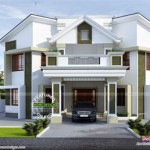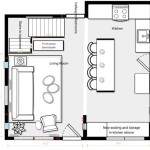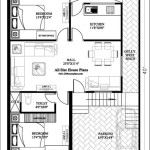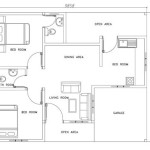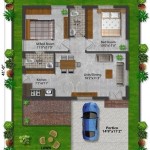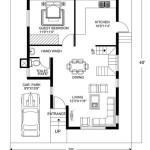House Plans Cost Estimate To Build
Building a new home is a significant investment, both financially and emotionally. A crucial early step in this process is obtaining accurate cost estimates. Understanding the factors influencing these estimations helps prospective homeowners make informed decisions and avoid potential financial pitfalls.
House plan costs encompass two distinct aspects: the cost of acquiring or designing the plans themselves, and the cost of actually building the house based on those plans. The former represents a smaller portion of the overall budget, while the latter comprises the bulk of the expenses.
Acquiring pre-designed house plans from online marketplaces or architectural plan libraries offers a cost-effective option, typically ranging from a few hundred to a few thousand dollars. These plans often come in various sizes and styles, allowing for some customization to suit individual needs. The advantage of pre-designed plans lies in their readily available nature and generally lower upfront costs.
Alternatively, commissioning a custom house plan from an architect or draftsperson offers greater design flexibility and personalization. This approach allows homeowners to tailor the design to their specific lot, lifestyle, and aesthetic preferences. However, custom design costs can vary significantly based on the complexity of the design, the architect's fees, and the local market. Homeowners should expect to invest several thousand dollars or more for custom design services.
Beyond the cost of the plans themselves, the primary financial consideration lies in the construction cost estimates. Several key factors influence these estimates, necessitating careful consideration and planning.
Location plays a significant role in construction costs. Land prices, labor rates, and material availability can vary considerably from one region to another. Building in a densely populated urban area often involves higher costs compared to building in a more rural setting. Local building codes and regulations can also impact expenses, requiring specific materials or construction techniques that add to the overall budget.
The size and complexity of the house design directly correlate to construction costs. Larger homes with intricate designs, custom features, and high-end finishes will naturally command higher budgets. The number of stories, the presence of basements or attics, and the inclusion of complex rooflines all contribute to the overall complexity and cost.
Material selection significantly influences the budget. Opting for premium materials, such as exotic hardwoods, imported tiles, or custom cabinetry, will increase the overall cost compared to using standard building materials. Fluctuations in material prices, due to market conditions or supply chain disruptions, can also impact the final cost estimate. Careful selection and sourcing of materials are crucial for managing the budget effectively.
Labor costs constitute a substantial portion of the construction budget. These costs vary based on local labor rates, the complexity of the project, and the availability of skilled tradespeople. Hiring experienced and reputable contractors, while potentially more expensive upfront, can often lead to better quality workmanship and fewer costly errors in the long run.
Site preparation and utility connections also contribute to the overall costs. Factors like site access, excavation requirements, and the distance to utility connections can all influence expenses. Difficult terrain or the need for extensive site work can significantly increase these costs.Incorporating energy-efficient features and sustainable building practices, while potentially adding to upfront costs, can offer long-term savings on energy bills and reduce environmental impact. Homeowners should consider the long-term benefits of these features when evaluating their budget.Obtaining accurate cost estimates typically involves consulting with building professionals, such as general contractors and quantity surveyors. These professionals can assess the house plans, evaluate site conditions, and provide detailed cost breakdowns. It's advisable to obtain multiple bids from different contractors to compare pricing and ensure competitive rates.
Contingency funds are essential for addressing unforeseen expenses that may arise during the construction process. Unexpected site conditions, material price increases, or changes to the design can all impact the budget. Allocating a contingency fund, typically a percentage of the overall budget, helps mitigate the financial impact of these unforeseen issues.
Working closely with building professionals throughout the planning and construction phases allows for ongoing cost monitoring and management. Regular communication and transparent accounting practices help ensure the project stays within budget and avoids costly surprises.
Financing options for new home construction vary, and prospective homeowners should explore different loan products and interest rates. Pre-approval for a construction loan provides a clear understanding of the borrowing capacity and helps inform budgetary decisions.
Understanding the various factors affecting house plans cost estimates empowers prospective homeowners to make informed decisions, manage their budget effectively, and realize their dream of building a new home.

Estimated Cost To Build Report Information House Plans And More

Calculator Step 1 Cost To Build

What Is Cost Estimation Of 3bhk Building For 1850 Sft Slab Area

How Much Does It Cost To Build A House Or Extension Estimating Costs For Domestic Building Projects Harvey Norman Architects Cambridge Bis Stortford Saffron Walden Residential Cambridgeshire Architect

Get The Lowdown On Cost To Build Estimates Houseplans Blog Com

Building Construction Work Estimate Material Cost Two Bedrooms

Get The Lowdown On Cost To Build Estimates Houseplans Blog Com

What Is Cost Estimation Of 3bhk Building For 1850 Sft Slab Area

Estimating Building Costs

Building Estimates

